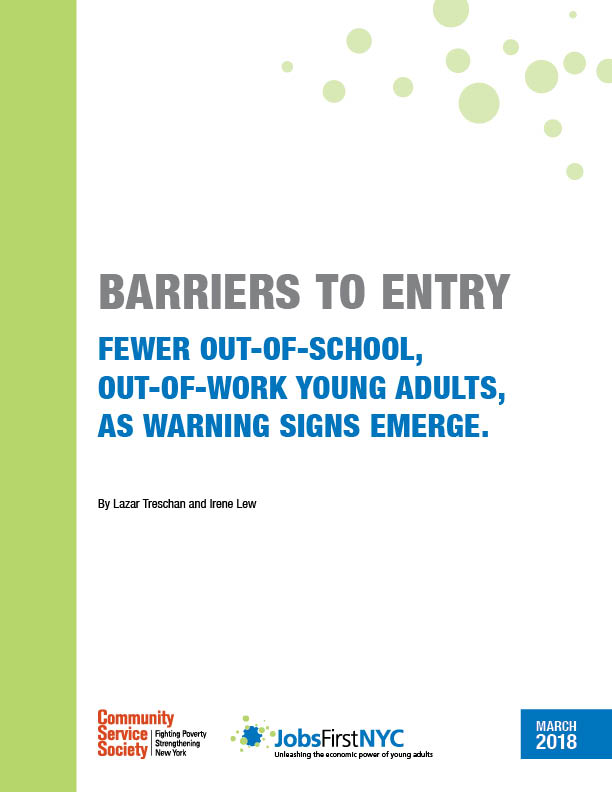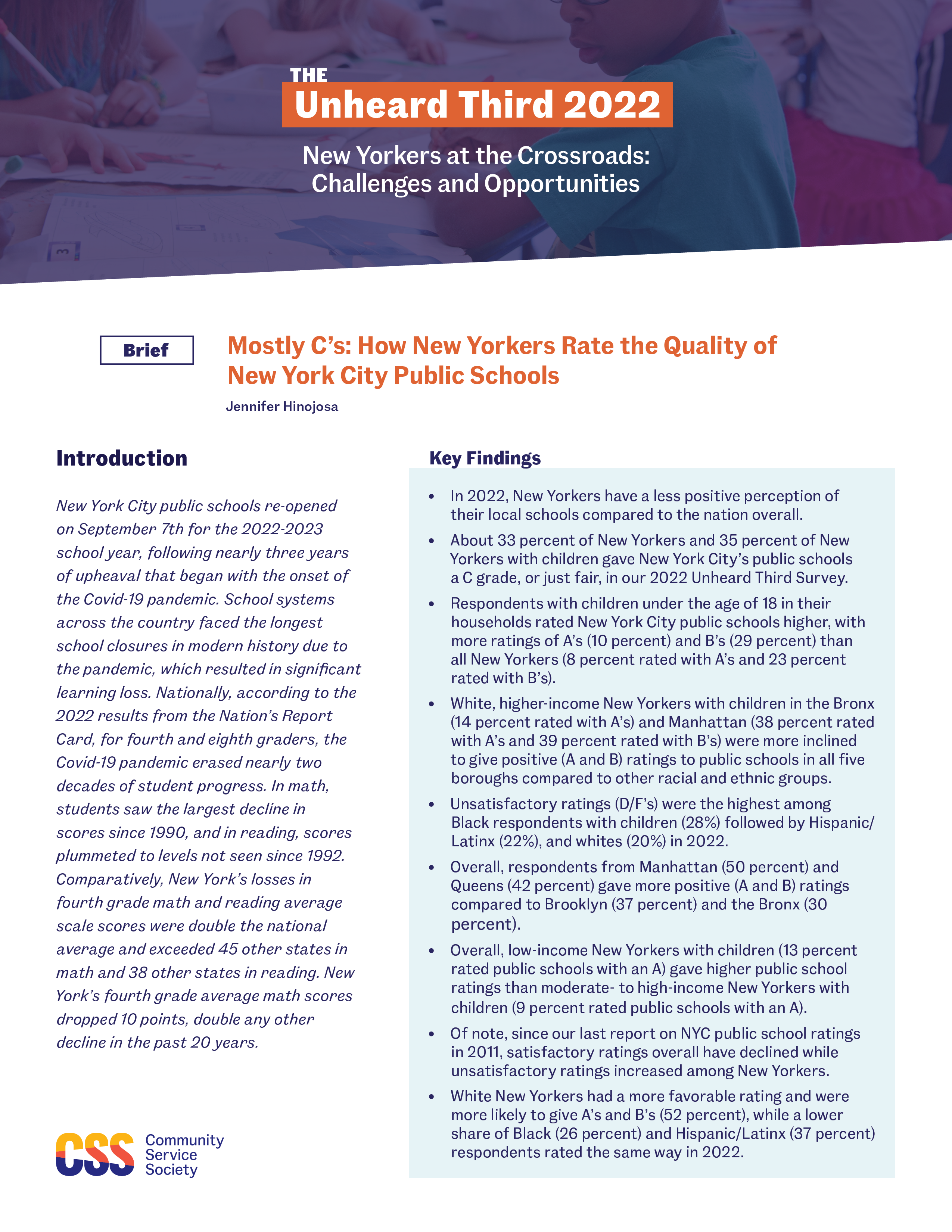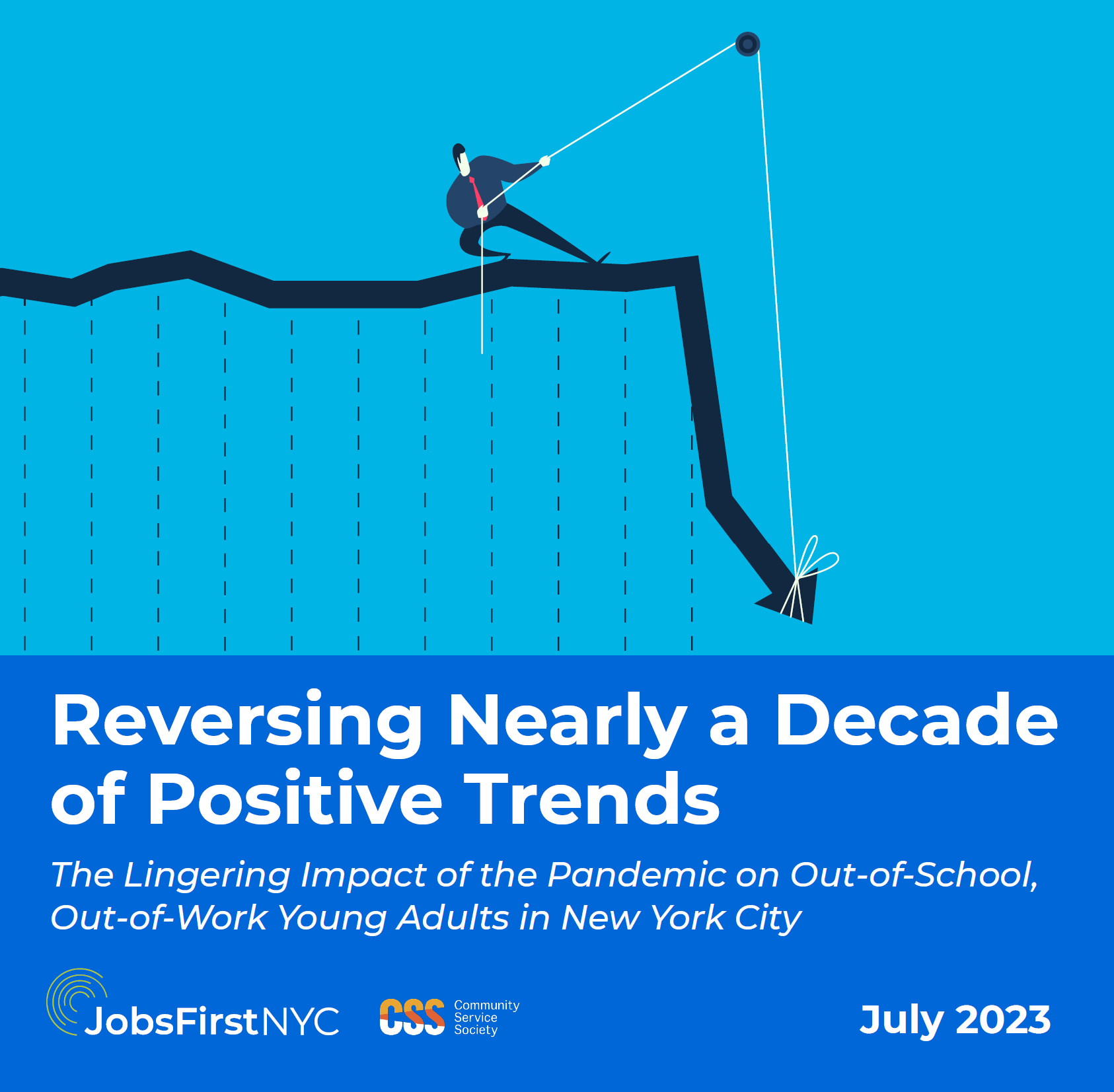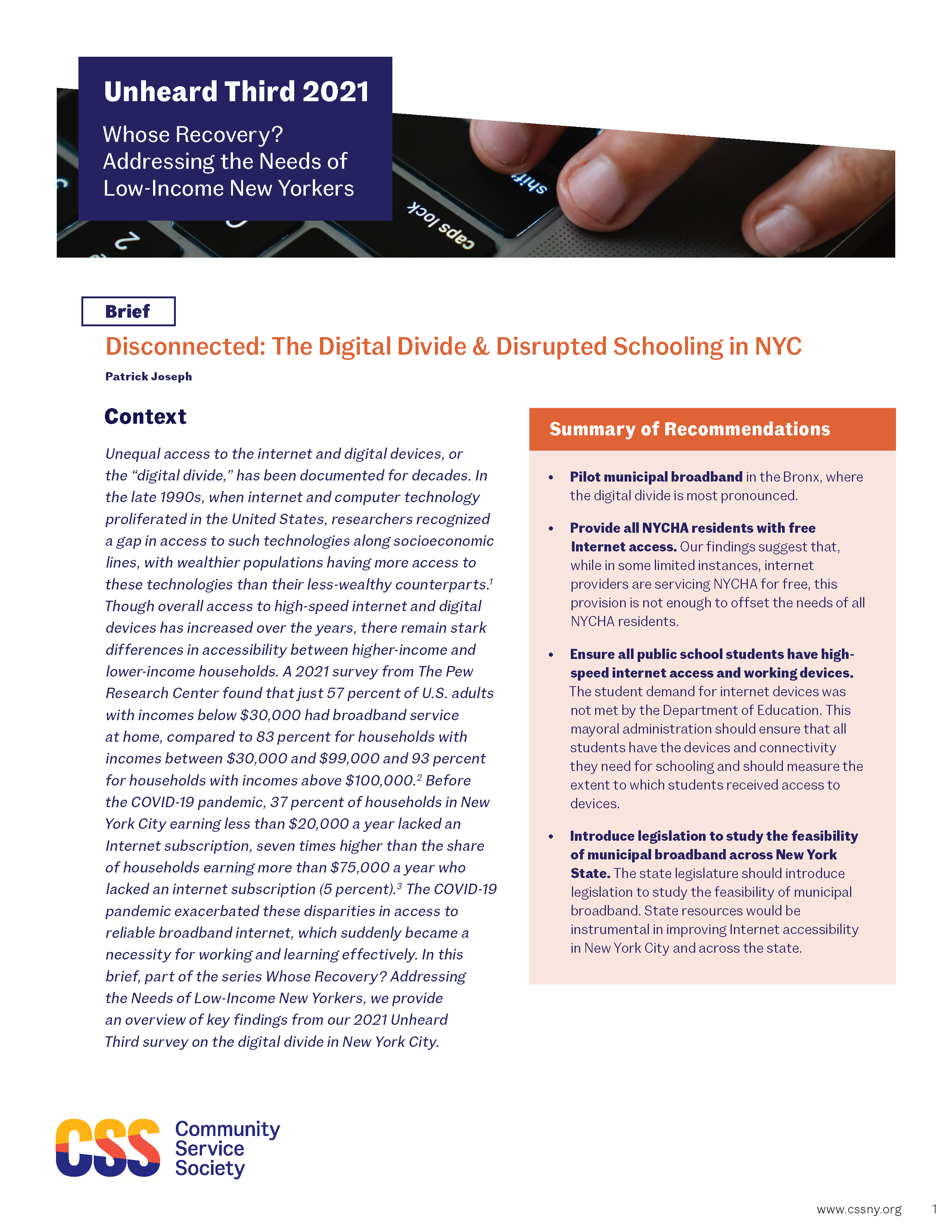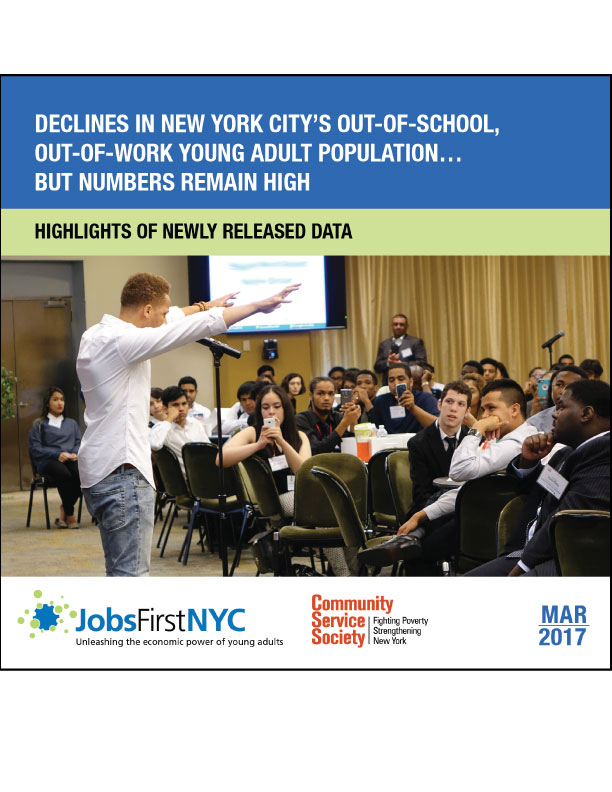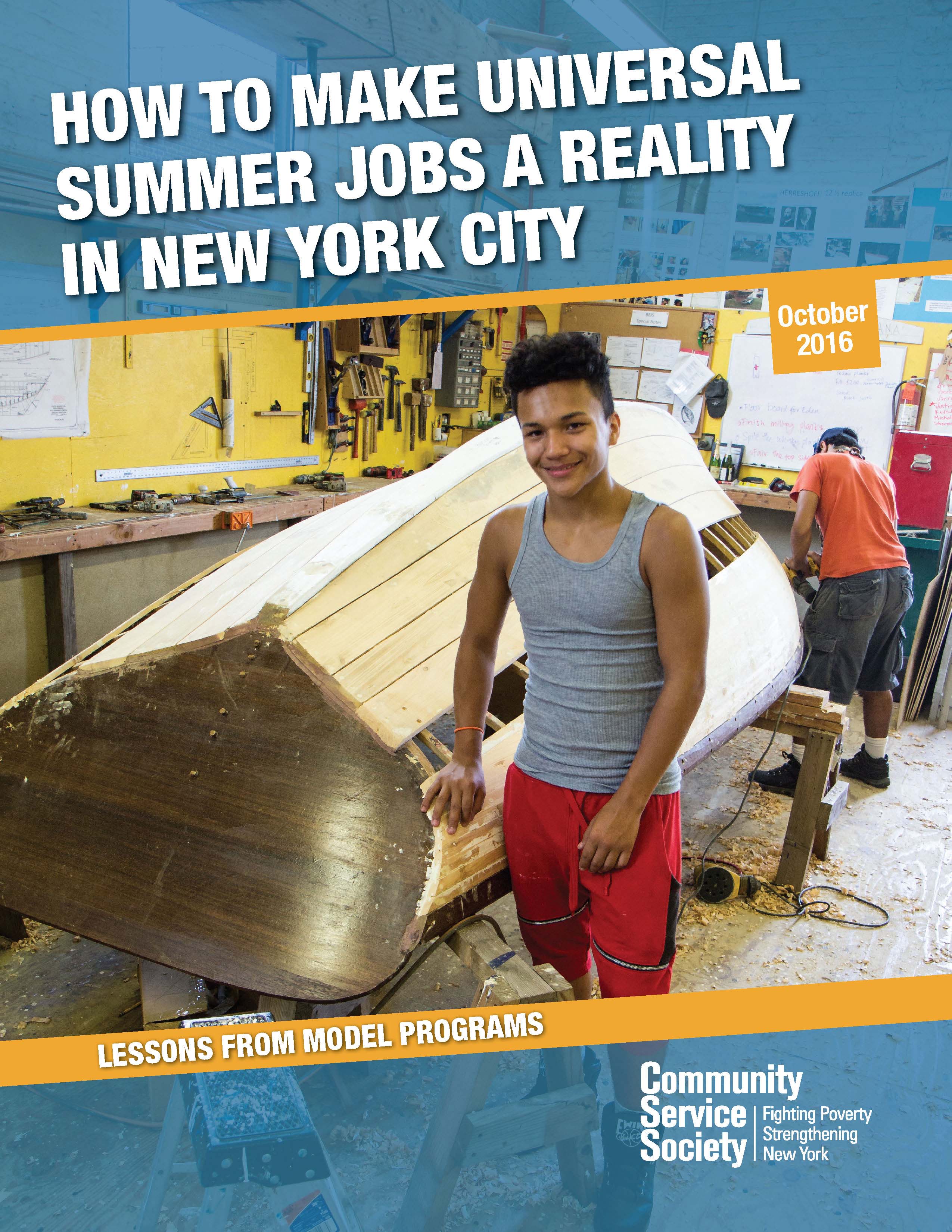Join Us
Publications
Fewer Out-of-School and Out-of-Work Young Adults, As Warning Signs Emerge
Lazar Treschan, JobsFirstNYC, Irene Lew
Summary: In the five years after the last economic recession, New York City has seen drastic declines in the number and share of young people between the ages of 18 through 24 who are out-of-school and out-of-work (OSOW): from over 186,000 and 22 percent of the young adult population, to close to 136,000 and 17 percent of the age group. Young adults have both been more able to find work during the economic recovery, and are attending school at higher rates. At the same time, despite increases in employment, there have been no net increases in full-time jobs, and all gains in part-time work, even for young adults not attending school. And while high school graduation and college enrollment have increased, so have the rates and numbers of young people leaving college without a degree. Our new study, Fewer Out-of-School and Out-of-Work Young Adults, As Warning Signs Emerge, funded and produced in collaboration with JobsFirstNYC, analyzes these data and presents recommendations for how New York City officials should use them to inform public policy.
Issues: Opportunities for Youth
Related Press:
Download PDF